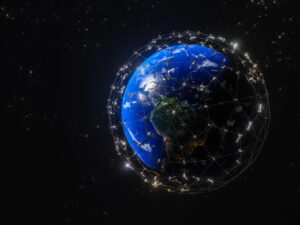The planetary boundary layer (PBL) is a crucial atmospheric region that directly influences weather patterns, air quality, and climate dynamics. It extends from the Earth’s surface to a height of about one to three kilometers and is characterized by turbulent mixing and exchange of heat, moisture, and momentum between the surface and the free atmosphere.
Challenges in Studying the PBL
Traditional methods of studying the PBL, such as radiosondes and ground-based measurements, have limitations in spatial and temporal resolution. This poses challenges in accurately capturing the complex dynamics of this region, especially in rapidly changing weather conditions.
Enter Deep Learning
Deep learning, a subset of artificial intelligence, has emerged as a powerful tool for analyzing large and complex datasets, making it particularly well-suited for studying the PBL. By leveraging deep neural networks, researchers can extract valuable insights from various sources of data, including satellite imagery, weather radar, and atmospheric models.
Applications of Deep Learning in Imaging the PBL
- Enhanced Data Fusion: Deep learning algorithms can integrate data from multiple sources, such as satellite imagery and ground-based sensors, to provide a comprehensive view of the PBL’s structure and dynamics.
- Cloud Detection and Classification: Deep learning models can accurately identify different types of clouds and their spatial distribution within the PBL, aiding in weather forecasting and climate modeling.
- Air Quality Monitoring: By analyzing satellite imagery and ground-level measurements, deep learning algorithms can assess air quality parameters, such as particulate matter and pollutant concentrations, within the PBL.
- Boundary Layer Height Estimation: Deep learning techniques can infer the height of the PBL boundary layer from remote sensing data, enabling more precise characterization of atmospheric stability and vertical mixing processes.
Benefits of Deep Learning in PBL Imaging
- Improved Accuracy: Deep learning algorithms can extract subtle patterns and features from complex datasets, leading to more accurate and reliable results compared to traditional methods.
- Enhanced Efficiency: By automating the process of data analysis and interpretation, deep learning accelerates the pace of research and facilitates real-time monitoring of the PBL, essential for timely decision-making in various applications.
- Advanced Insights: Deep learning enables researchers to uncover hidden relationships and dynamics within the PBL, paving the way for a deeper understanding of atmospheric processes and their impacts on weather and climate.
Conclusion
In conclusion, deep learning offers unprecedented opportunities for imaging and studying the Earth’s planetary boundary layer. By harnessing the power of artificial intelligence, researchers can overcome existing challenges and gain valuable insights into this critical atmospheric region, contributing to advancements in weather forecasting, climate research, and environmental monitoring.







